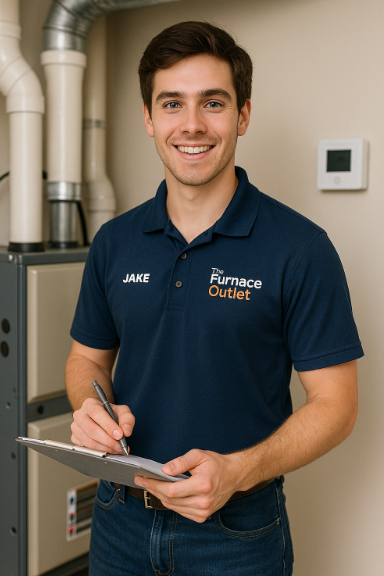If you’ve ever asked yourself, “What’s aircon in full?” or wondered about the nuts and bolts of modern air-conditioning, you’re not alone. The term aircon is casual shorthand for air-conditioning, but behind this simple abbreviation lies a complex system designed to make indoor environments comfortable year-round. In this article, we’ll dive into the definition of an air-conditioning unit, explore the theory behind how it works, and break down the components, maintenance, and efficiency considerations that matter most to homeowners.
For homeowners looking to upgrade or install a reliable, high-efficiency system, the Goodman 3 Ton 14.5 SEER2 R-32 Bundle is an excellent choice, representing a modern matched system with R-32 refrigerant and advanced SEER2 efficiency.
1. Aircon in Full — Understanding the Term
“Aircon” is simply shorthand for air-conditioning. While it’s more commonly used in regions like Australia, the UK, and parts of Asia, the term is increasingly recognized globally. Essentially, an air-conditioning unit is any system designed to control indoor temperature, humidity, and air quality, creating a comfortable and safe living environment.
The formal air conditioning unit definition explains it as:
“Air conditioning is the process of removing heat from an enclosed space to produce a cooler interior environment. Modern systems may also manage humidity and airflow, ensuring comfort and improved air quality.”
1.1 Aircon for Comfort and Safety
Air-conditioning systems aren’t just about keeping you cool. They help:
-
Reduce indoor humidity, preventing mold growth
-
Maintain even temperatures for sensitive electronics or appliances
-
Filter and circulate air, reducing allergens and dust
Understanding the full scope of aircon helps homeowners appreciate why modern systems are designed with both efficiency and indoor air quality in mind.
2. Air Conditioning Theory — How Aircon Works
At its core, every air-conditioning system operates on the principle of heat transfer, moving heat from inside a building to the outdoors. This is accomplished through the vapor-compression refrigeration cycle, a clever mechanism that uses refrigerant, compressors, and coils to absorb and expel heat.
According to Service Champions:
“An air conditioner absorbs indoor heat via a refrigerant, compresses it to raise its temperature and pressure, releases heat outdoors through the condenser, and repeats the cycle.”
2.1 The Refrigeration Cycle
Here’s how a standard system works:
-
Evaporator Coil (Indoor Unit): Warm indoor air passes over the evaporator coil, transferring heat to the refrigerant.
-
Compressor (Outdoor Unit): The refrigerant gas is compressed, increasing its temperature and pressure.
-
Condenser Coil (Outdoor Unit): The refrigerant releases heat to the outside air.
-
Expansion Valve: The refrigerant cools and returns to the evaporator to repeat the cycle.
GlobalSpec highlights that this cycle is incredibly energy-efficient when properly matched to your home size and system requirements.
2.2 Heat Transfer and Comfort
Contrary to what some might think, air conditioners don’t generate cold air — they remove heat. This is why proper insulation, duct sealing, and system sizing are critical. Heat removed from indoor spaces must be efficiently expelled outdoors, otherwise the system works harder and energy bills rise.
3. Components of a Modern Aircon Unit
Air-conditioning systems are typically split into indoor units and outdoor units, each playing a key role.
3.1 Indoor Unit
The indoor unit houses the evaporator coil, blower fan, and air filters. Its main responsibilities include:
-
Pulling warm air from the home through ductwork
-
Transferring heat to the refrigerant
-
Delivering cooled air back into living spaces
Proper sizing of the indoor unit ensures even temperature distribution throughout the home, avoiding hot or cold spots.
3.2 Outdoor Unit
The outdoor unit contains the compressor and condenser coil, releasing heat to the environment. It’s essential that the unit is:
-
Installed in a shaded, ventilated location
-
Free of debris, plants, or obstructions that can reduce efficiency
-
Matched in capacity with the indoor unit
AC Systems Inc explains that the combination of indoor and outdoor units, along with refrigerant lines and expansion valves, determines system performance.
3.3 Supporting Components
Other critical components include:
-
Blower Fan: Circulates air through ducts
-
Filters: Capture dust, pollen, and other particles
-
Ductwork: Directs cooled air efficiently
-
Thermostat: Controls system operation
A well-designed system coordinates all these components to maintain comfort and minimize energy use.
4. Modern Aircon Systems and Energy Efficiency
Today’s air-conditioning systems are more advanced than ever. Features include:
-
Heat pump integration for both heating and cooling
-
Variable-speed compressors for precise temperature control and energy savings
-
Eco-friendly refrigerants like R-32 that reduce environmental impact
The Goodman 3 Ton 14.5 SEER2 R-32 Bundle illustrates a modern approach, with matched indoor and outdoor units for maximum efficiency and comfort.
5. Common Aircon Myths
-
Air conditioners produce cold air. False — they remove heat from indoor air.
-
Bigger units are always better. Oversized units cycle too quickly, wasting energy.
-
All air-conditioning units are the same. Refrigerant type, duct design, and installation quality all matter.
-
Maintenance isn’t essential. Ignoring filters, coils, and refrigerant checks reduces efficiency and lifespan.
Regular maintenance ensures your system operates at peak efficiency, reduces energy costs, and extends equipment life. StanSac emphasizes that even small maintenance tasks can have a significant impact.
6. Choosing the Right Aircon System
Selecting the best air-conditioning unit for your home involves:
-
Evaluating indoor and outdoor unit compatibility
-
Checking SEER ratings for efficiency
-
Ensuring proper ductwork and airflow
-
Maintaining filters and coils
The goal is a system that provides consistent comfort, energy savings, and reliable operation year after year.
7. Conclusion
So, what’s aircon in full? It’s more than just a device that cools your home — it’s a complex system that manages heat, airflow, and indoor comfort. Understanding air-conditioning theory, components, and maintenance practices helps homeowners make informed choices when upgrading or installing a new system.
For homeowners seeking a modern, reliable, and energy-efficient system, the Goodman 3 Ton 14.5 SEER2 R-32 Bundle offers an excellent example of what a high-quality, matched HVAC solution looks like today.







